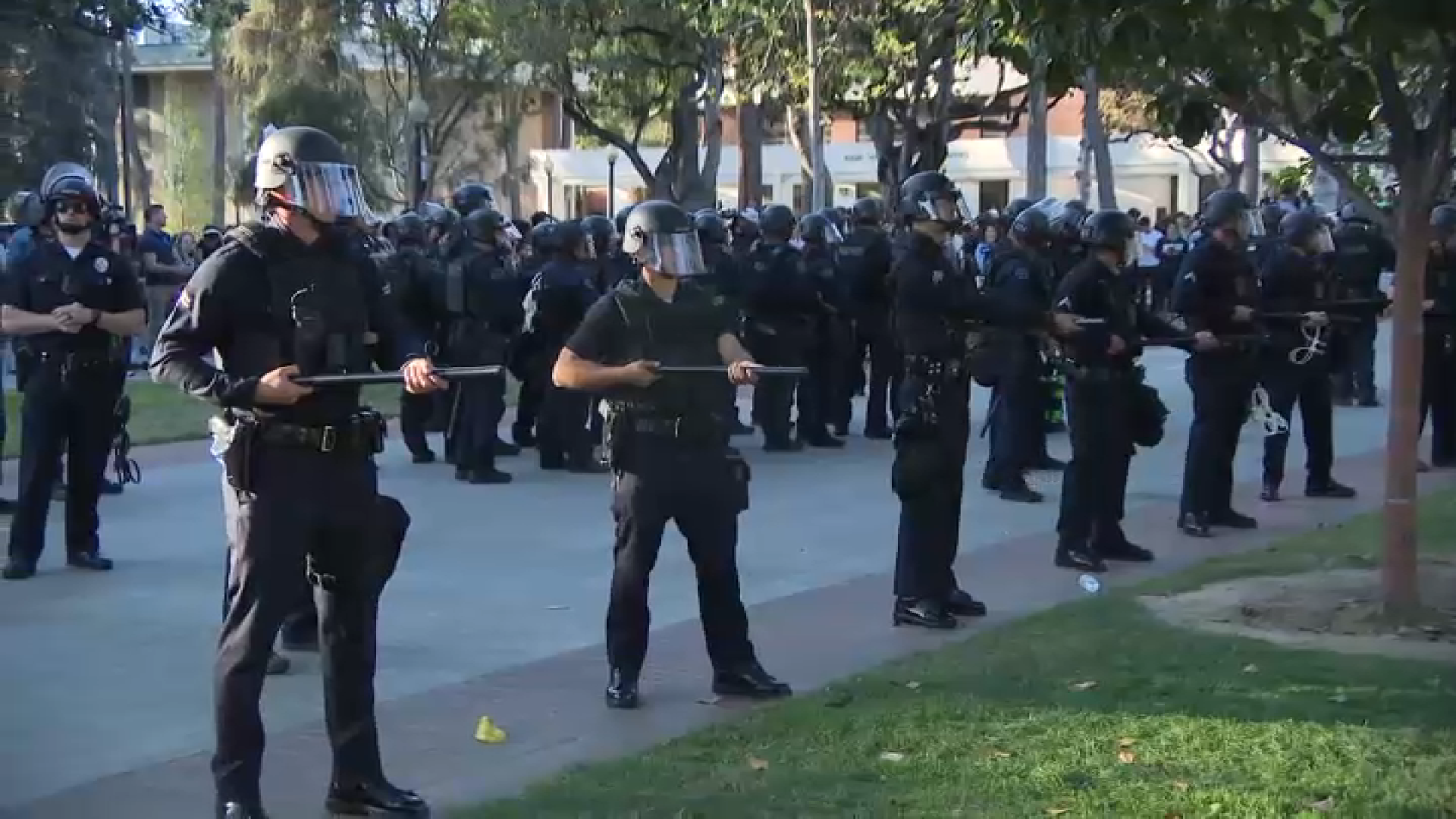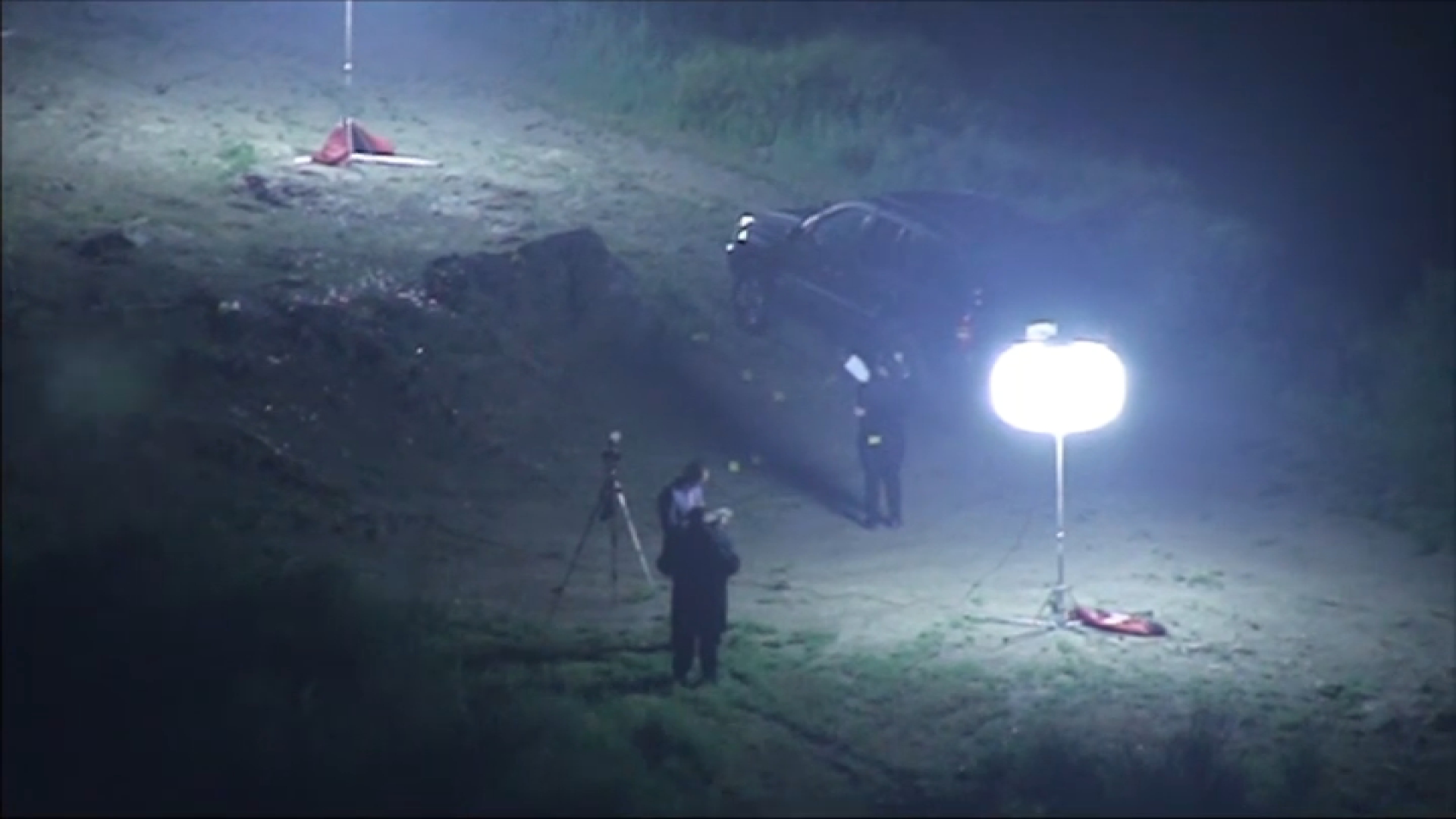A second round of wet weather this week might include brief downpours in San Gabriel Valley foothill communities below a wildfire burn area, prompting residents to prepare for mudslides.
The rainfall is expected to arrive Tuesday night and into Wednesday after much-needed rain showers began around 11 p.m. Monday and continued steadily through 2 a.m. in drought-stricken Southern California. Showers were lingering in the Inland Empire as of 4:30 a.m. Tuesday.
The rain ended in time for morning commuters.
"It’s a welcome sight to see an unsettled pattern as we head into our dry season," NBC4 meteorologist Crystal Egger said. "While this week’s round of spring showers will not end the drought, it can only help."
Most areas received less than a quarter inch of rain. Between Monday and Wednesday, the storm is expected to generate between a quarter and three quarters of an inch of rain, with 1 inch possible across southwest-facing mountain slopes and near the sites of any thunderstorms, forecasters said.
"Typically we only average 0.91" of rain in downtown LA during the month of April," Egger said.
Because of cold air aloft, that second band of rain will be "more showery" than the first and could include brief and heavy downpours accompanied by small hail, they said.
Snow levels were initially between 5,000 and 5,500 feet Monday, and were expected to dip to 4,500 feet on north-facing slopes by Tuesday morning, according to the National Weather Service. Snow levels may lower to 4,000 feet by Wednesday morning.
Residents in recent burn areas above Glendora and Azusa are advised to monitor the forecasts as heavy downpours could bring the threat of minor mud and debris flows. The storm comes about a month after a larger one spurred evacuation orders for more than 1,000 homes in the cities in northeastern Los Angeles County, and about 2 1/2 months after a wildfire left them stripped of vegetation and made them vulnerable to collapsing hillsides.
Local
Get Los Angeles's latest local news on crime, entertainment, weather, schools, COVID, cost of living and more. Here's your go-to source for today's LA news.
Parking restrictions have been issued on city streets and residents have been urged to clear them of trash cans and other objects.
The storms come amid long-term drought conditions in California. The first significant storms in months brought rain to California in late February and early March, but persistent dry conditions prevailed since then, reducing the rainfall's benefits for the drought-stricken region.
"The most beneficial moisture will impact Northern and Central California where several inches of rain will fall and feet of snow will be measured in the Sierra Nevada Mountains. This is obviously good news for our state," Egger said.
Since December, 4.47 inches of precipitation have been reported in California. The average for that period is 11.73, according to the National Climatic Data Center. The state has received 7.53 inches of precipitation since June, about 9 inches below the average for that nine-month period.



